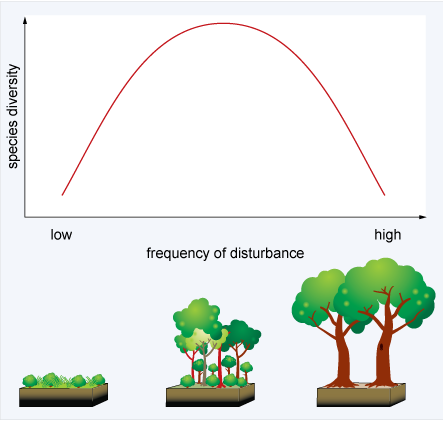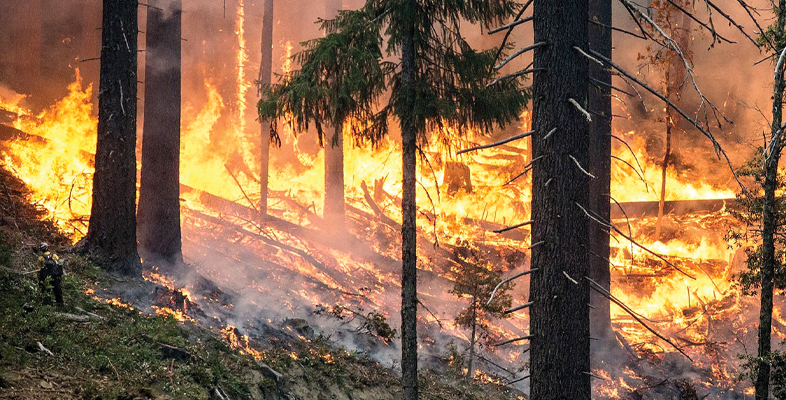4.2 The intermediate disturbance hypothesis
The realisation that the frequency of disturbance can influence community structure led to the formulation of the intermediate disturbance hypothesis (IDH) (Connell, 1978; Figure 22 below). The IDH proposes that species diversity is generally maximised if disturbance is neither too rare nor too frequent because species that thrive at both early and late successional stages can coexist.

Connell’s original paper has received more than 4000 citations and is still referenced in important scientific papers. Many studies have empirically validated the IDH, particularly for marine systems. However, there are also an increasing number that show little support and this has led to a great deal of controversy regarding its validity in explaining the relationship between disturbance and species diversity. For example, it can be argued that tropical forests show high diversity even though natural disturbance is minimal.
Whether or not the IDH holds appears to depend, to some degree, on scale (whether on a local or geographical scale) and the type of disturbance. For example, at a small local scale species diversity is often maximised at a high frequency of fire rather than at an intermediate or low frequency.
-
Give an example where frequent fire is necessary to maintain species diversity.
-
The Fynbos in the Cape region of South Africa.
However on a larger scale, disturbances of intermediate frequency and/or intensity may generate diversity. For example, a fire of intermediate or mixed severity could increase diversity by generating spatial heterogeneity within a landscape.
This is because a mixed severity fire will result in a complex of patches in a landscape. Patches differ in severity of burn and include unburned patches, low severity burn patches, moderate severity burn patches where perhaps one-third to two-thirds of the vegetation is killed, and high severity burn patches where almost all the vegetation is killed (Figure 23). In this case, the IDH may not hold on a local scale (within patches) because species richness within a small area may decline (for example, in severely burnt areas). However, on a larger landscape scale a fire of intermediate severity may increase species diversity. This is because areas or patches that differ in burn severity, and that are at different stages of post-fire change, would sustain more species with different disturbance sensitivities.

Although the IDH is controversial, the idea that landscapes with greater heterogeneity in size, age, and burn severity of post-fire patches support a greater diversity of species, has led some researchers to propose that a diversity of fire regimes across a landscape (named pyrodiversity) is necessary to maintain biodiversity.
